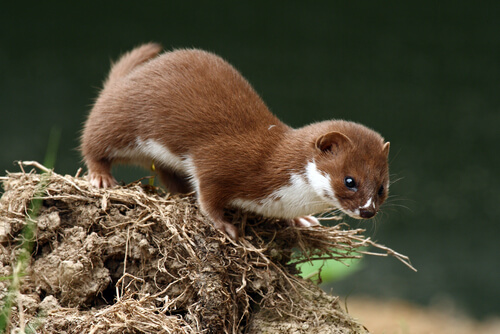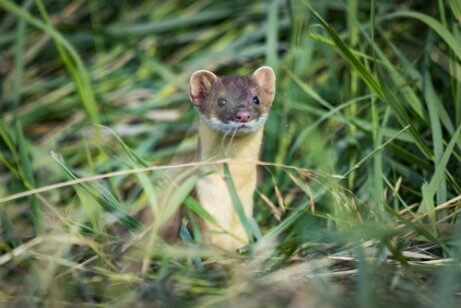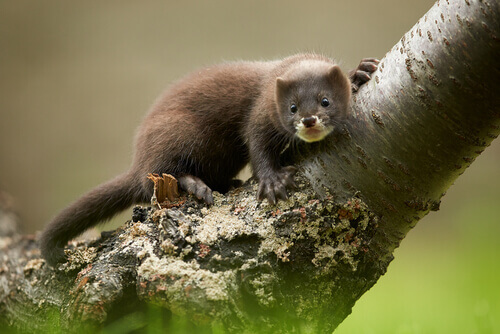Discover 5 Weasel Species

Weasels are carnivorous mammals that belong to the mustelidae family (they’re related to minks, ferrets, and stoats). Today’s weasel species inhabit America, Europe, Asia, and North Africa. In this article, you’ll learn all about them!
How many weasel species exist?
At present, there are 18 weasel species, which are quite similar in terms of size, coat, and habits. Various legends revolve around these seemingly cute animals. For example, that they “steal” milk from sows or rabbits and that they’re vermin. Here are five weasel species:
1. The least weasel
Also known as the common weasel, featured on the main image of this article, inhabits North America, Eurasia, and North Africa (always above the equator), both in rural and urban ecosystems. It hides among hedges, firewood, trees, crops, and meadows.
This animal is a very effective predator, as it can kill prey up to 10 times its weight. Its body is long and flexible and both its snout and legs are short. In addition, its eyes are prominent, as well as its ears. It has a reddish-brown coat except for the underparts and neck, which are white.
2. The stoat or short-tailed weasel
Its habitat is similar to that of the least weasel. However, it’s a bit more widespread in North America and Asia. It’s also been introduced to New Zealand, where it’s considered a harmful exotic species.

The stoat or short-tailed weasel has an elongated body with fur that changes color depending on the time of year. It’s brown on the back with white underparts during the summer, and it’s completely white, except for its black eyes and nose, in the winter.
It makes burrows under stones or thorny bushes, feeds on rodents, has nocturnal or diurnal habits, and doesn’t climb but moves quickly and agilely.
3. The long-tailed weasel, one of the weasel species
Also known as the bridled weasel or big stoat, this species only inhabits America, from southern Canada to northern Bolivia. It prefers open habitats near bodies of water: forests, fields, meadows, and marshes. This species usually inhabits abandoned caves or rock crevices and hollow logs.

Regarding its physical appearance, it has a striking long and very hairy tail, hence its name, which comprises 40–70% of its head and body length. Its fur is light brown. However, in the winter, it becomes white.
4. The European mink
The European mink, which is brown in color with a white snout, is a critically endangered species that inhabits Spain and the Ural Mountains. It prefers aquatic environments and swamps rich in vegetation and with slow rivers.

This species has a more varied diet, as it feeds on small mammals, fish, reptiles, crustaceans, amphibians, and birds. Regarding their reproduction, the rutting period starts in March or April. The females give birth between two and six young in May or June, who stay in the burrow for a month.
5. The Siberian weasel, the last of the weasel species
Finally, there’s the so-called Siberian weasel, which has a yellowish-white coat. In addition, it’s famous because it attacks poultry at night and because it has a very strong smell, similar to that of the skunk. The males measure about 15 inches and their tail another seven, while females measure about 11 inches and their tail another five.

This is one of the weasel species that only inhabits Asia, specifically Siberia, the Gobi desert, the islands of Japan, where it was introduced, and southern China. Although people hunt it for its fur, which is used to make brushes, it isn’t endangered.